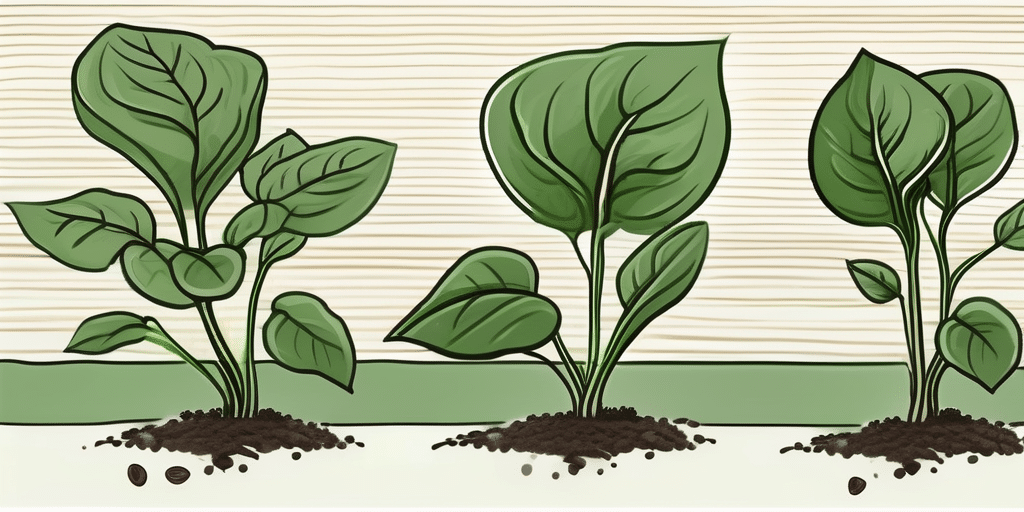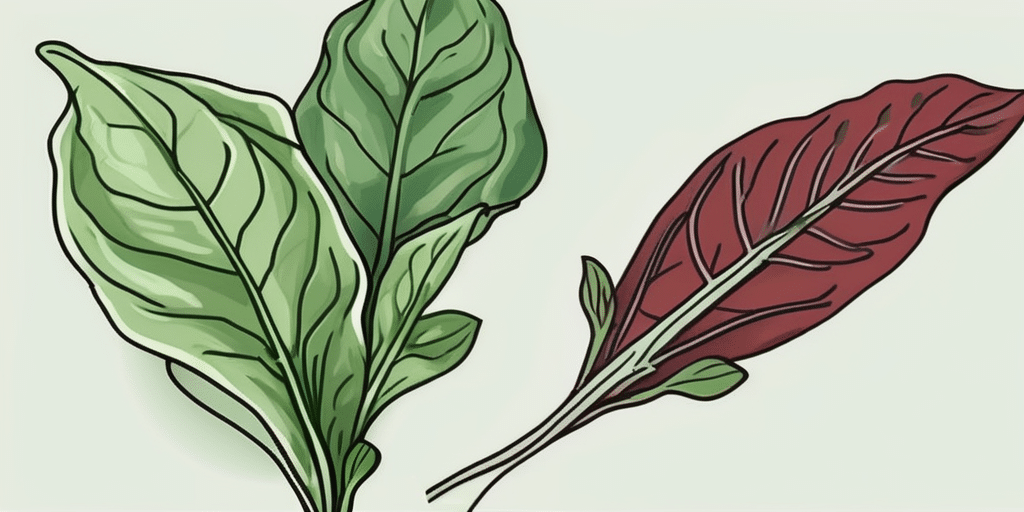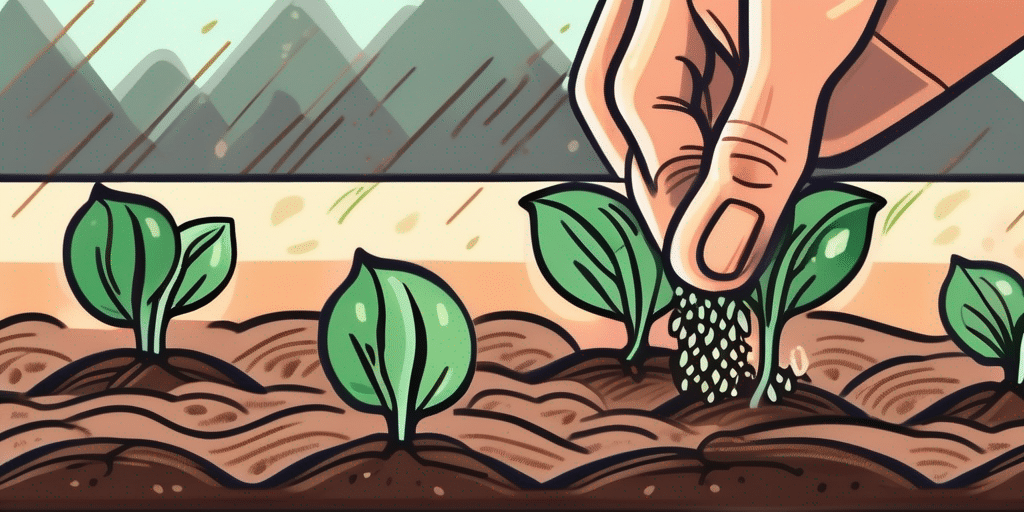If you’re a fan of spinach, you’ll love Olympia spinach. This leafy green vegetable is not only delicious, but it’s also packed with nutrients. In this article, we’ll guide you through the process of growing Olympia spinach, whether you have a garden, a balcony, or even just a windowsill.
When to Start Olympia Spinach
Before we delve into the nitty-gritty of growing Olympia spinach, let’s talk about the best time to start. Spinach is a cool-season crop, meaning it thrives in cooler temperatures. You can start planting Olympia spinach as soon as the soil can be worked in the spring. It’s also possible to grow this leafy green in the fall, but we’ll focus on spring planting for now.
How to Grow Olympia Spinach From Seed
When growing Olympia spinach, starting from seeds is a cost-effective and relatively simple option. Here’s a step-by-step guide:
- Prepare your soil: Olympia spinach prefers well-drained soil that is rich in organic matter. Prepare the soil by incorporating compost or aged manure.
- Sow the seeds: Plant the seeds directly into the prepared soil, about half an inch deep. Space the seeds around 2 inches apart.
- Water gently: After planting, water the area lightly to moisten the soil. Be careful not to overwater, as this can lead to diseases.
- Thin the seedlings: Once the seedlings emerge and have developed their first set of true leaves, thin them out. Leave around 4-6 inches of space between each plant.
It’s important to note that Olympian spinach has a relatively short germination period, usually around 7-14 days. Keep an eye on the soil moisture during this time to ensure successful sprouting.
How and When to Transplant Olympia Spinach
If you prefer to start your Olympia spinach indoors or want to give your seedlings a head start, transplanting is the way to go. Here’s how to do it:
- Start seeds indoors: Around 4-6 weeks before the last expected frost, you can sow Olympia spinach seeds in seed trays or small pots filled with a seed-starting mix.
- Provide optimal conditions: Keep the seed trays or pots in a warm spot with plenty of sunlight. Maintain consistent moisture by misting with water or covering the containers with a plastic dome.
- Avoid transplant shock: When the seedlings have reached a height of 2-3 inches and have developed a strong root system, they are ready to be transplanted.
- Choose the right spot: Select a location in your garden or balcony that receives at least 6 hours of sunlight per day.
- Prepare the soil: Before transplanting, prepare the soil by loosening it and incorporating organic matter.
- Plant the seedlings: Dig holes slightly larger than the root ball of each seedling. Gently place the seedlings in the holes and cover the roots with soil.
- Water thoroughly: After transplanting, water the seedlings deeply to settle the soil around the roots. Mulching can help retain moisture.
Remember to harden off your seedlings before planting them outdoors. This involves gradually acclimating them to outdoor conditions over a period of 7-10 days. Start by placing them in a sheltered spot for a few hours a day and gradually increase their exposure to sunlight and wind.
How to Plant Olympia Spinach – Spacing and Patterns
Proper spacing is crucial for healthy growth and good yields. Here’s what you need to know:
- Row spacing: If you’re planting Olympia spinach in rows, leave around 12-18 inches of space between each row. This allows enough room for air circulation and facilitates easy harvesting.
- Plant spacing: Within the rows, space the Olympia spinach plants around 6-8 inches apart.
- Successive planting: To ensure a continuous harvest, consider sowing new seeds every couple of weeks.
Alternate row planting, known as the “staggered method,” can also optimize space usage. By offsetting each row, you can fit more plants in a smaller area.
How Long to Grow Olympia Spinach
Olympia spinach is a fast-growing vegetable, and you’ll be able to enjoy its tender leaves in no time. On average, Olympia spinach takes around 35-45 days from planting to harvest. However, keep in mind that warmer temperatures can accelerate the plant’s growth, while cooler temperatures make it slower.
How to Water Olympia Spinach
Watering is a crucial aspect of growing healthy spinach plants. Here are a few tips to help you get it right:
- Consistent moisture: Olympia spinach prefers slightly moist soil. Avoid letting the soil dry out completely between waterings. On the other hand, be cautious not to overwater, as this can lead to diseases like root rot.
- Watering frequency: Aim to provide around 1-1.5 inches of water per week. However, this can vary depending on your climate and soil type.
- Deep watering: Instead of frequent shallow watering, give the plants a thorough soaking. This promotes deeper root growth and overall plant health.
Monitoring the soil moisture regularly by sticking your finger about an inch into the soil can help you determine when to water.
How to Fertilize Olympia Spinach
While Olympia spinach doesn’t require heavy feeding, providing the right nutrients can enhance its growth. Here’s how to fertilize your plants:
- Organic matter: Before planting, mix compost or aged manure into the soil to enrich it with essential nutrients.
- Topdressing: About 4-6 weeks after planting, you can apply a balanced organic fertilizer following the instructions on the package.
- Avoid overfertilization: Be cautious not to overdo it with fertilizers, as excessive nitrogen can result in leafy growth but smaller leaves. Follow the recommended application rates.
Regularly monitoring your plants for any signs of nutrient deficiencies or imbalances can help you adjust your fertilizer application if necessary.
Sunlight Requirements for Olympia Spinach
As a leafy green, Olympia spinach appreciates a good dose of sunlight. Here’s what you need to know about its light requirements:
- Full sun: Olympia spinach thrives in full sun, which means it should receive at least 6 hours of direct sunlight each day.
- Partial shade: If you live in a hot climate, providing some afternoon shade can help prevent the leaves from wilting or turning bitter.
If you’re growing Olympia spinach indoors, placing it near a sunny window or using grow lights can provide ample light for its growth.
Soil Requirements for Olympia Spinach
The right soil conditions are essential for Olympia spinach to flourish. Here’s what you need to know:
- Well-drained soil: Olympia spinach prefers soil that drains well. If your soil tends to hold water and stay soggy, consider adding organic matter or amending it with perlite or vermiculite to improve drainage.
- pH level: The optimal soil pH for Olympia spinach is between 6.0 and 7.0, which is slightly acidic to neutral.
Conducting a soil test before planting can help you assess the pH level and make any necessary adjustments by adding lime to raise the pH or sulfur to lower it.
How to Grow Olympia Spinach Outdoors
Growing Olympia spinach outdoors allows it to benefit from natural sunlight and airflow. Here’s how to do it:
- Choose the right spot: Select a location in your garden that receives full sun or partial shade as mentioned earlier.
- Prepare the soil: Loosen the soil and remove any weeds or debris. Incorporate compost or aged manure to improve the soil’s nutrient content.
- Plant the seeds or seedlings: Follow the instructions mentioned earlier to plant your Olympia spinach seeds or transplant your seedlings.
- Mulch to retain moisture: Apply a layer of organic mulch, such as straw or wood chips, around the plants to help conserve soil moisture and suppress weed growth.
- Water and fertilize as needed: Monitor the soil moisture and provide water and nutrients as required, following the guidelines discussed earlier.
- Protect from extreme heat: During the hot summer months, consider providing shade to prevent the spinach from bolting or becoming bitter.
With proper care and maintenance, your outdoor Olympia spinach plants should thrive and produce abundant harvests.
How to Grow Olympia Spinach Indoors
Don’t have outdoor space? No problem! Olympia spinach can also be grown indoors, making it an excellent choice for urban gardeners or those with limited space. Here’s what you need to do:
- Choose a suitable container: Select a pot or container that is at least 6-8 inches deep to accommodate the spinach’s root system. Ensure it has drainage holes.
- Fill with the right soil mix: Use a well-draining potting mix that is rich in organic matter. Avoid using garden soil, as it can become compacted in containers.
- Plant the seeds or seedlings: Follow the instructions mentioned earlier for sowing seeds or transplanting seedlings.
- Provide adequate light: Place your indoor Olympia spinach in a spot that receives the recommended 6 hours of sunlight per day. Alternatively, you can use full-spectrum grow lights.
- Monitor temperature and humidity: Ensure the indoor environment remains within the preferred temperature range of 60-70°F (15-21°C). Maintain humidity levels by misting the plants regularly or using a humidifier if needed.
- Water and fertilize as needed: Follow the watering and fertilization guidelines mentioned earlier, adjusting them as necessary based on the indoor conditions.
Indoor gardening can provide a convenient and accessible way to grow your own Olympia spinach, no matter the time of year or weather conditions outside.
How to Grow Olympia Spinach In Containers and Pots
If you’re short on garden space or prefer the flexibility of container gardening, growing Olympia spinach in pots or containers is a fantastic option. Here’s how to do it:
- Choose the right container: Select a pot or container that has a minimum capacity of 4 gallons for each Olympia spinach plant.
- Optimize drainage: Ensure the container has drainage holes at the bottom to prevent waterlogging. Placing a layer of gravel or small stones at the bottom can further enhance drainage.
- Use a suitable potting mix: Fill the container with a well-draining potting mix that is nutrient-rich and has the right moisture-retaining properties.
- Plant the seeds or seedlings: Follow the instructions mentioned earlier for sowing seeds or transplanting seedlings into the container.
- Water and monitor moisture: Check the soil moisture regularly and water the plants when the top inch of soil feels dry to the touch. Ensure the excess water drains out of the container to prevent waterlogging.
- Provide sufficient sunlight: Place the container in a sunny spot or ensure your indoor container receives the recommended amount of light. Rotate the container occasionally to ensure even exposure.
Container gardening is not only practical but also allows you to bring nature closer to your living space or kitchen, providing fresh Olympia spinach for your culinary adventures.
Olympia Spinach Companion Plants – What to Plant With & Not Plant With Olympia Spinach
Companion planting involves strategically growing compatible plants together to maximize their growth and deter pests. When it comes to Olympia spinach, certain plants make excellent companions, while others are best kept separate. Here are some recommendations:
- Good companions: Planting lettuce, radishes, carrots, and onions near Olympia spinach can create a diverse and mutually beneficial garden bed. These plants have similar light and watering requirements, and they don’t compete heavily for nutrients.
- Avoid planting with: Spinach is sensitive to strong-smelling plants like members of the onion family, such as garlic or leeks. Keep them separate to prevent any adverse effects on the taste and growth of your Olympia spinach.
Companion planting is not only practical but can also promote a more robust ecosystem in your garden, attracting beneficial insects and minimizing pests.
Common Olympia Spinach Pests and Diseases
While Olympia spinach is generally a resilient plant, it can still fall victim to certain pests and diseases. Here are a few common issues to watch out for:
- Aphids: These small, sap-sucking insects can cause distortion and yellowing of the leaves. Use organic insecticidal soap or introduce natural predators like ladybugs to control their population.
- Slugs and snails: These slimy creatures feed on the leaves, leaving behind holes and silvery trails. Handpicking, trapping, or using barriers like copper tape can help repel them.
- Downy mildew: This fungal disease appears as yellow or white patches on the leaves, often accompanied by a fuzzy gray or purplish growth on the undersides. Provide good air circulation by spacing the plants adequately, and avoid overhead watering.
Early detection and prompt action are key to managing these issues effectively. Remember to remove any infected leaves or plants to prevent the spread of diseases.
How & When to Harvest Olympia Spinach
Harvesting Olympia spinach at the right time ensures the best flavor and texture. Here’s what you need to know:
- Leaf harvest: Olympia spinach is typically harvested as a cut-and-come-again crop, meaning you can harvest individual leaves as needed. Start picking the outer leaves when they reach around 4-6 inches in length, using a sharp pair of scissors or a knife.
- Full plant harvest: If you prefer harvesting the entire plant, wait until it has reached maturity, which is typically around 6-8 weeks after planting.
Regular harvesting promotes new growth and prevents the plant from bolting or going to seed. Remember to wash the harvested leaves thoroughly before using them in your favorite recipes.
How to Store & Preserve Olympia Spinach
To prolong the shelf life of your Olympia spinach and enjoy its fresh flavor for longer, proper storage is crucial. Here’s how to do it:
- Trim and wash: After harvesting, remove any damaged or wilted leaves. Rinse the spinach thoroughly under cool running water to remove any dirt or debris.
- Dry thoroughly: Use a salad spinner or pat the leaves gently with a clean towel to remove excess moisture. Avoid storing the spinach while it’s still wet, as this can promote spoilage.
- Refrigerate or freeze: For short-term storage, wrap the spinach loosely in a damp paper towel and place it in a perforated plastic bag in the refrigerator. It should stay fresh for about a week. If you have an abundance of spinach, blanch and freeze it in portion-sized containers for long-term storage.
Remember to label and date your frozen spinach to keep track of its freshness. Frozen Olympia spinach is perfect for use in smoothies, soups, or as an addition to cooked dishes throughout the year.
Frequently Asked Questions
Here are answers to some common questions about growing Olympia spinach:
- Can I grow Olympia spinach in containers indoors?
Yes, you can grow Olympia spinach in containers indoors as long as you provide sufficient light and meet its growing requirements. - How often should I water Olympia spinach?
Olympia spinach prefers slightly moist soil. Water deeply when the top inch of soil feels dry, but be cautious not to overwater. - Can I grow Olympia spinach year-round?
Olympia spinach is a cool-season crop but can be grown year-round in some regions with mild winters. - Can I save seeds from my Olympia spinach plants?
Yes, you can save seeds from Olympia spinach plants. However, ensuring that the plants don’t cross-pollinate with other spinach varieties is essential for maintaining the desired characteristics.
Growing Olympia spinach can be a rewarding experience for both beginners and experienced gardeners. With its versatility and abundant nutritional value, Olympia spinach is a perfect addition to any garden or indoor space. So grab your gardening gloves and get ready to enjoy the bountiful harvests of this fantastic leafy green!
References:
[1] University of Minnesota Extension. (2021). Fertilizing the garden. Retrieved from https://extension.umn.edu/planting-and-growing-guides/fertilizing-garden[2] Michigan State University Extension. (2021). Spinach growth and management. Retrieved from https://www.canr.msu.edu/home_gardening/vegetables/spinach-growth-and-management[3] University of California Agriculture and Natural Resources. (2019). Spinach. Retrieved from https://ucanr.edu/repositoryfiles/ca3402p15-70482.pdf
Join the How to Grow Everything Community
Ready to transform your green thumb into a garden full of lush Olympia spinach and more? Subscribe for free to How to Grow Everything and learn how to build the garden of your dreams! Receive personalized gardening advice tailored to your location, grow zone, and experience level. Our family is dedicated to helping you grow your best garden yet with the best gardening tips, special offers, and deals delivered straight to your inbox. No spam, just pure gardening gold. 100% free. Subscribe now and be part of a community that grows together!






